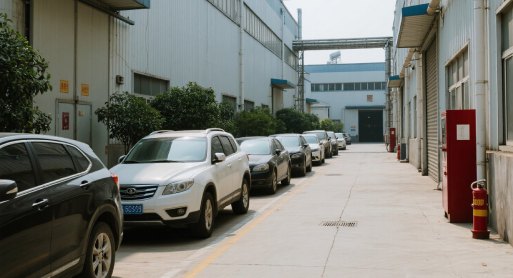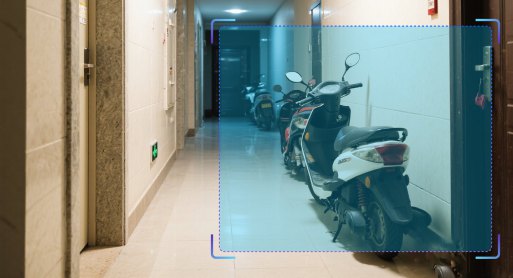
Electric Vehicle Intrusion into Buildings Detection

Algorithm Introduction
Based on AI vision analysis technology, the system can automatically detect electric vehicles (EVs) entering residential buildings or riding elevators - behaviors that violate safety regulations. It supports monitoring vehicle movement paths at key locations such as building entrances, lobbies, and elevator cabins. By setting up Regions of Interest (ROIs) to define detection zones and directions, the system enables precise supervision of unauthorized EV entry into buildings and vertical transportation, effectively reducing fire hazards caused by battery charging.
- ● Image Requirements:
- Recommended resolution: 1920×1080
- Minimum target size: 90×90 pixels
- ● Operational Conditions:
- Optimal performance in well-lit daytime environments
- Performance may degrade under low-light or strong backlight conditions
Application Value
-

Building Entrances (Campus/Complex)
The algorithm monitors residents who illegally push electric vehicles into buildings and promptly report such incidents to the authorities for handling. -

Elevators (Campus/Complex)
The algorithm detects electric vehicles entering elevator areas and reports such incidents to better facilitate property management.
FAQ
-
Algorithm AccuracyAll algorithms published on the website claim accuracies above 90 %. However, real-world performance drops can occur for the following reasons:
(1) Poor imaging quality, such as
• Strong light, backlight, nighttime, rain, snow, or fog degrading image quality
• Low resolution, motion blur, lens contamination, compression artifacts, or sensor noise
• Targets being partially or fully occluded (common in object detection, tracking, and pose estimation)
(2) The website provides two broad classes of algorithms: general-purpose and long-tail (rare scenes, uncommon object categories, or insufficient training data). Long-tail algorithms typically exhibit weaker generalization.
(3) Accuracy is not guaranteed in boundary or extreme scenarios.
-
Deployment & InferenceWe offer multiple deployment formats—Models, Applets and SDKs.
Compatibility has been verified with more than ten domestic chip vendors, including Huawei Ascend, Iluvatar, and Denglin, ensuring full support for China-made CPUs, GPUs, and NPUs to meet high-grade IT innovation requirements.
For each hardware configuration, we select and deploy a high-accuracy model whose parameter count is optimally matched to the available compute power.
-
How to Customize an AlgorithmAll algorithms showcased on the website come with ready-to-use models and corresponding application examples. If you need further optimization or customization, choose one of the following paths:
(1) Standard Customization (highest accuracy, longer lead time)
Requirements discussion → collect valid data (≥1 000 images or ≥100 video clips from your scenario) → custom algorithm development & deployment → acceptance testing
(2) Rapid Implementation (Monolith:https://monolith.sensefoundry.cn/)
Monolith provides an intuitive, web-based interface that requires no deep AI expertise. In as little as 30 minutes you can upload data, leverage smart annotation, train, and deploy a high-performance vision model end-to-end—dramatically shortening the algorithm production cycle.




